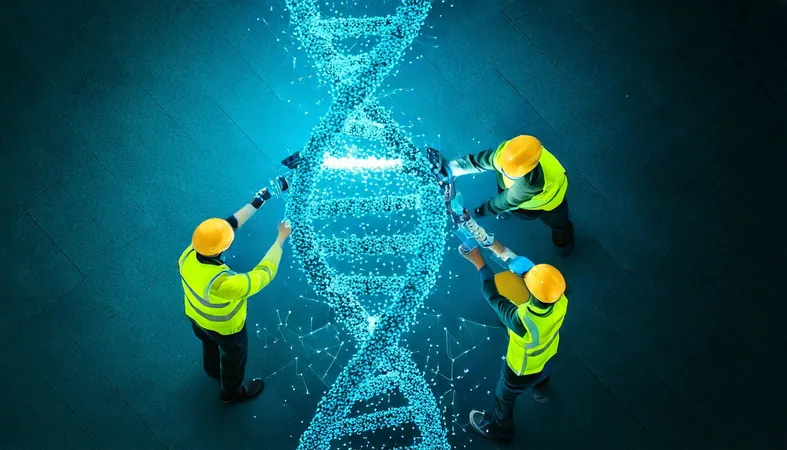
Unlocking Cancer's Secrets: New Method Exposes DNA Repair Weaknesses
2025-04-23
Author: Ming
Major Breakthrough in Cancer Research
Researchers at ETH Zurich, Switzerland, have made a groundbreaking discovery in cancer research by mapping the complex genetic networks that cells utilize to repair their DNA. This pioneering work uncovers previously hidden vulnerabilities in cancer cells, creating exciting opportunities for future therapies.
The DNA Dilemma: A Constant Battle
Human DNA is made up of a staggering 3.1 billion building blocks. Each cell faces the relentless challenge of maintaining this delicate genetic code, continually managing and repairing damage, untangling DNA strands, and reestablishing chemical bonds to protect their genetic integrity.
Unearthing Hidden Interactions
Repair mechanisms are not just defenses against environmental aggressors; they are crucial for cell survival. Jacob Corn, a Professor of Genome Biology at ETH Zurich, explains that damage repair often occurs in everyday scenarios, not just due to toxins or radiation.
Intriguingly, over 500 of the approximately 20,000 protein-coding genes in the human genome are linked to DNA repair. By meticulously analyzing gene interactions, Corn and his team have revealed critical insights about how genomes can be safeguarded and how this information can be weaponized against cancer.
A Systematic Approach to Discovery
Their research, featured in the journal Nature, involved systematically disabling pairs of DNA repair genes in cultivated human cells. The team investigated nearly 150,000 different pairwise gene inactivations, resulting in substantial findings regarding how gene redundancy can affect DNA repair.
The Power of Redundancy
One of the most striking revelations is the impressive redundancy within the human genome. "Human cells thrive on redundancy," says Corn. While disabling a single gene may often leave cells unharmed, inactivating both a gene and its backup can result in catastrophic DNA repair failures.
The researchers identified around 5,000 gene pairs that, when both disabled, cause critical DNA repair breakdowns. Their findings provide detailed insights into two of these pairs, unveiling vital but previously unknown cellular pathways.
Revolutionizing Cancer Treatment
This research opens a promising gateway to innovative cancer treatments. Notably, cancer cells often harbor more mutations than healthy cells, suggesting that some of their DNA repair mechanisms may already be compromised. Fielden, a lead author of the study, notes, "Our research pinpoints additional genes that must be targeted to impede the growth of cancer cells.”
The team has also mapped out connections between known cancer mutations and new molecular targets that could be disabled with pharmacological approaches. Corn comments, "We’ve illuminated pathways through the dark forest—now it’s straightforward to navigate them."
A New Era of Collaborative Research
To facilitate ongoing exploration, the researchers have developed a new web platform to share these critical findings with the scientific community. Corn hopes that by making this data publicly accessible, other researchers will harness these insights to fast-track the development of practical cancer therapies.



 Brasil (PT)
Brasil (PT)
 Canada (EN)
Canada (EN)
 Chile (ES)
Chile (ES)
 Česko (CS)
Česko (CS)
 대한민국 (KO)
대한민국 (KO)
 España (ES)
España (ES)
 France (FR)
France (FR)
 Hong Kong (EN)
Hong Kong (EN)
 Italia (IT)
Italia (IT)
 日本 (JA)
日本 (JA)
 Magyarország (HU)
Magyarország (HU)
 Norge (NO)
Norge (NO)
 Polska (PL)
Polska (PL)
 Schweiz (DE)
Schweiz (DE)
 Singapore (EN)
Singapore (EN)
 Sverige (SV)
Sverige (SV)
 Suomi (FI)
Suomi (FI)
 Türkiye (TR)
Türkiye (TR)
 الإمارات العربية المتحدة (AR)
الإمارات العربية المتحدة (AR)